Making Sky Aipens Go Big
Introduction
One of the things I wanted to discover after returning to Baltimore last winter from a month in India was how my lessons in the traditional Uttarakhand painting style called aipen would affect my Planets series of watercolors. (To see a portfolio of the Planets, go to: http://www.scottponemone.com/portfolio/planets/)
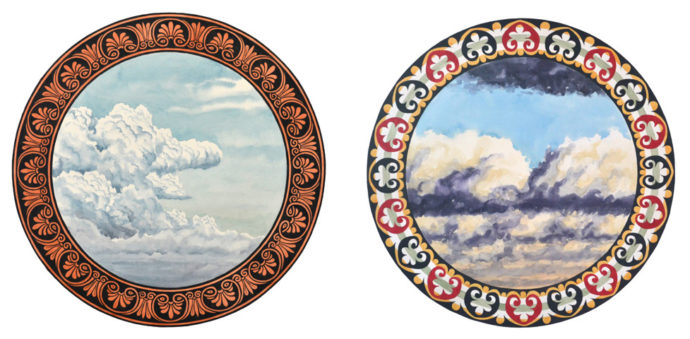
(left) Scott Ponemone, Planet VIII, watercolor, 7 Sept. 2015, 20″ diameter, (right) Scott Ponemone, Planet IX, watercolor, 22 Jan. 2016, 20″ diameter
Here are two from the Planet series. Each has a border 2.5″ wide. Oddly enough the two here share a motif of anthemions. The ones on the right are from an ancient Greek vase at the Walters Art Museum; those on the left from frescoes in a 14th-century Eastern Orthodox church in Metéora, Greece.
In both cases the border was carefully drawn in pencil. The lighter colors were painted first; while the black was painstakenly painted second.
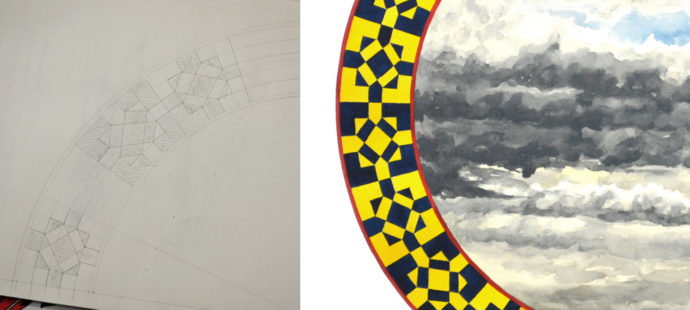
Above (left) shows my planning for the border to Planet X. My first attempt (the pair to the top) I decided was too wide. So I reduced the width a few degrees (of the circle) and decided it looked closer to the original, which was a mosaic from Ostia Antica, the ancient port of Rome. Then I drew this pattern all the way around the border.
Aipen borders required a whole new procedure simply because there could be no drawing of the border on the watercolor paper. My previous ART I MAKE post describes aipan, its tradition, and the process in detail: http://www.scottponemone.com/lessons-in-aipan/

(left) Photo by Isabel Moreno Cortez, a PECAH artist from Mexico. (right) Detail of Aipen II, watercolor and gouache, 4 March 2016, 12″ diameter.
Here is a photo of me taken during PECAH 2015, an artist residency near Manila, a village in the Himalayan foothills. I was working on a traditional aipen grid pattern (Chowki) on top of an opaque ground of Indian red pigment. Except for a few reference points and a penciled circle, I worked freehand. Needless to say, this took a great deal of patience and persistence and a steadier hand than I have now. Hence my right hand assisted the left.
The fun part of painting that aipen was that, once the grid pattern of straight lines and pointed arches was complete, I had many options on finishing up. For instance, what meander pattern should run around the outermost band; what to fill in the squares with (I chose a traditional Sun and pinwheels); and how many of the arches to fill in.
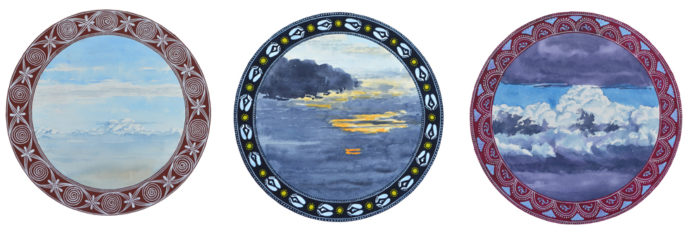
(from left) Sky Aipen I, watercolor and gouache, 5 March 2016, 12″ diameter; Sky Aipen II, watercolor, 6 March 2016, 12″ diameter; Sky Aipen III, watercolor, 7 March 2016, 12″ diameter
I scrambled during the last few days of the PECAH residency to make roundels of skies with aipen-inspired borders. At only 12 inches across they are like miniature Planet paintings. Sky Aipen I used the traditional Indian Red gouache for the border background; the other two had watercolor backgrounds. It was an intense workout, and I thought the results were pretty exciting. But what would happen when I made Sky Aipens as big as the Planets with their 20″ diameter?
BIG Sky aipens: step by step
I decided to record the steps I would take to paint big Sky Aipens. Except for the first one (of three), I even photographed the steps in painting the skies. Recording the steps was useful not only for making this presentation possible but for slowing me down and allowing me to thoughtfully consider what would come next.
For the big Sky Aipens I decided to make my own gouache Indian red paint. As it turned out I had all of the ingredients because I had regrained all of the doors on the parlor floor of my house. They had been stripped of their graining by the previous owners. Then the doors were stained black walnut. Fortunately the two pairs of pocket doors separating the three parlors retained almost all of their 1850s graining. And black walnut was the fashionable wood at the time. But the look of the black walnut graining of the pocket doors and that of the black walnut staining on the other doors was night and day. So I taught myself how to grain paint.
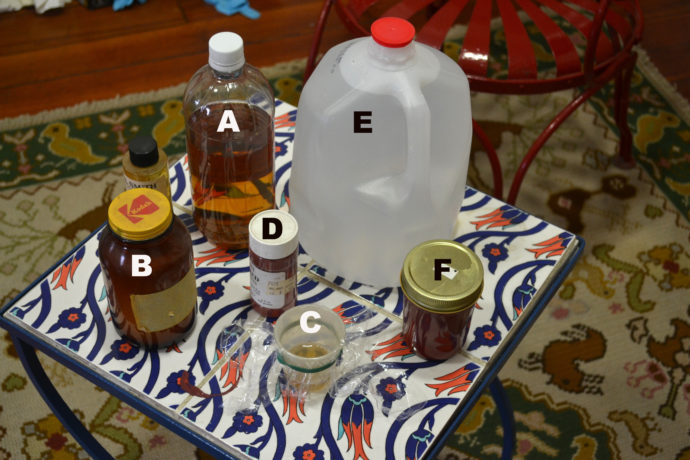
The ingredients: A apple cider vinegar; B powdered gum arabic; C gum arabic dissolved in E distilled water; D powdered Indian red pigment; and F the finished paint. Formula: Stir 1 part pigment into 1 to 2 parts vinegar, then add half part dissolved gum arabic. Source: Ina Brosseau Marx, Allen Marx and Robert Marx, Professional Painted Finishes, Watson-Guptill Publications, New York, 1991. See “Country Graining” on page 233. (Note: You can purchase gum arabic pre-dissolved with a preservative. My mixture will mold if not refrigerated.)
SKY AIPEN IV
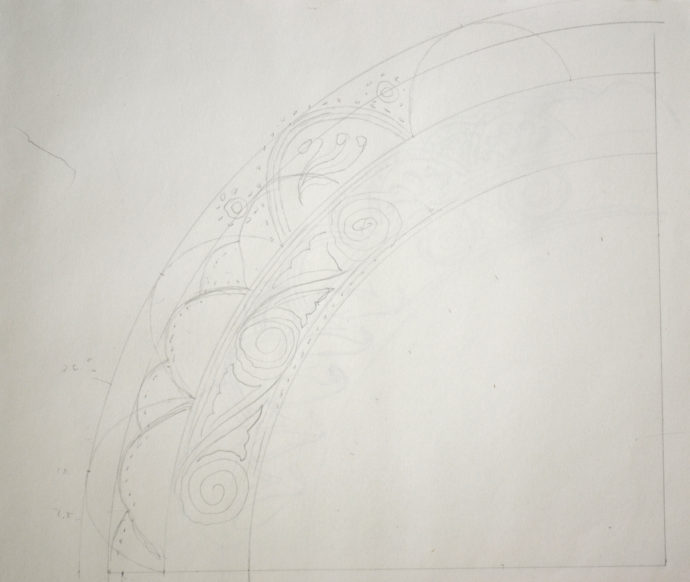
As with the Planets, the big Sky Aipens begin with a full-scale sketch of the border. It appears that I first thought of making the border 3″ wide instead of the 2.5″ width I used on the Planets. You can see that I scaled back the scalloped outer edge a half inch. So I started intending to alternate large scallops with smaller ones peaking out between the larger ones. But it didn’t turn out that way, and I’m pleased that it didn’t.
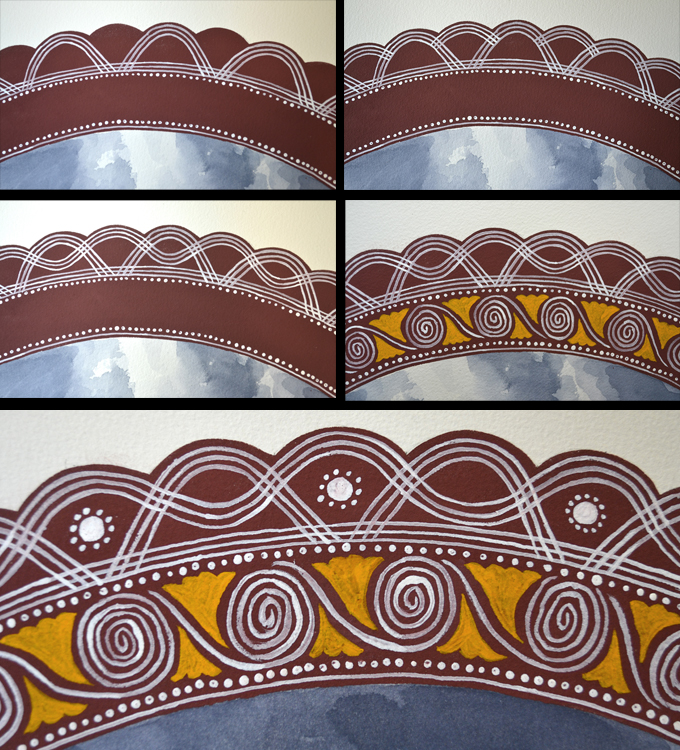
In the topmost pair I followed the initial plan. Then I thought better of it. Why not connect the small scallops to create a wave pattern? And so I did as seen in middle row left. Then I filled in the lower band pretty much as intended. Finally I added the sun in the smaller scallops. The sun appeared in the initial plan but only when the border was 3″ wide. And I left out the wavy plant-like device that was in the 3″ border.
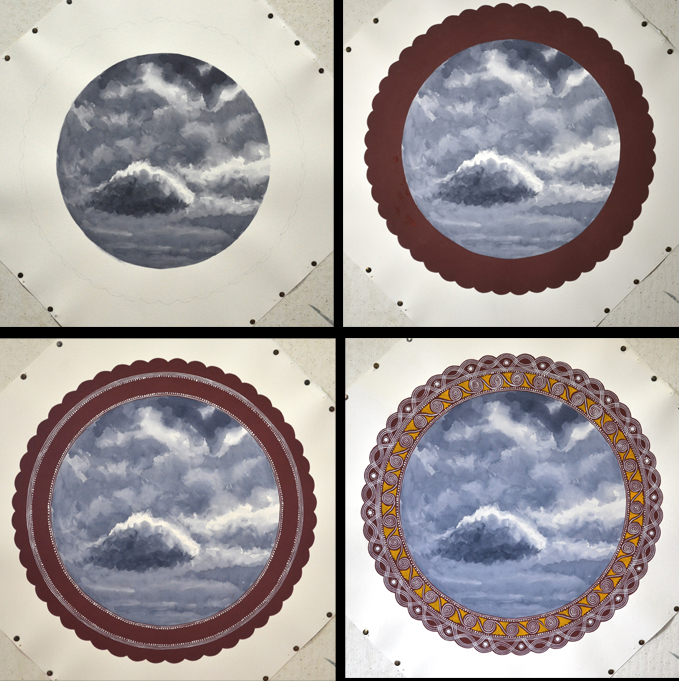
Here are four stages of Sky Aipen IV, starting with a finished sky and only a penciled-in scalloped edge.
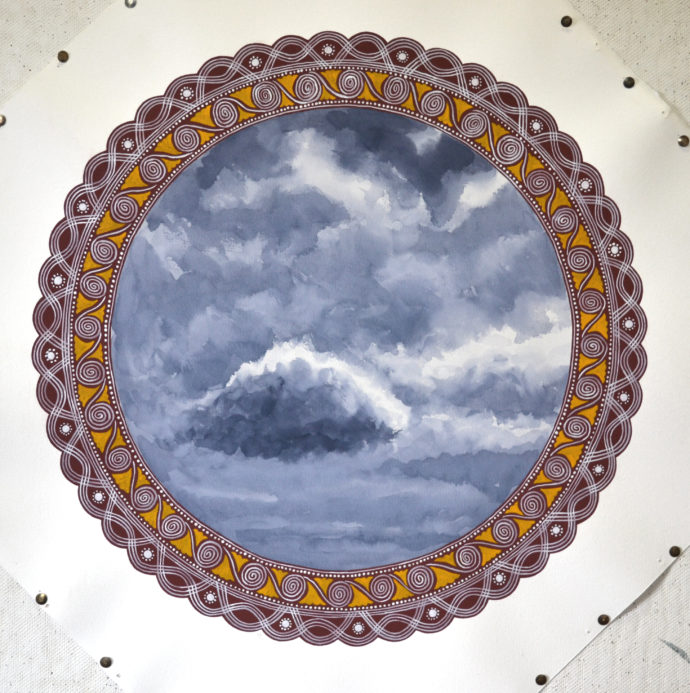
Scott Ponemone, Sky Aipen IV, watercolor and gouache, 4 April 2016, 20″ diameter. NOTE: the painting is positioned on Arches cold-press watercolor paper so that the framed piece would be a diamond.
Sky Aipen V
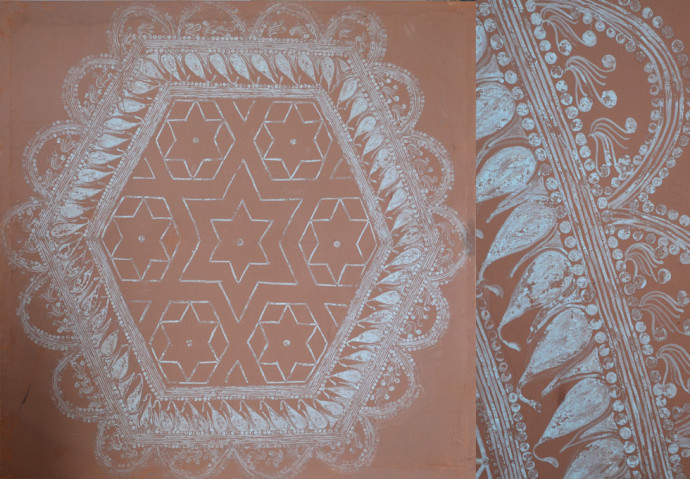
The source for parts of the borders on Sky Aipens V and VI is a aipen painted on cotton at the home of author Jugal Kishor Paithshali, near Almora, Uttarakhand. For Sky Aipen V it’s the wavy, plant-like device repeated three times under the arches. For Sky Aipen VI it’s the white inverted teardrop with a hook at the bottom.
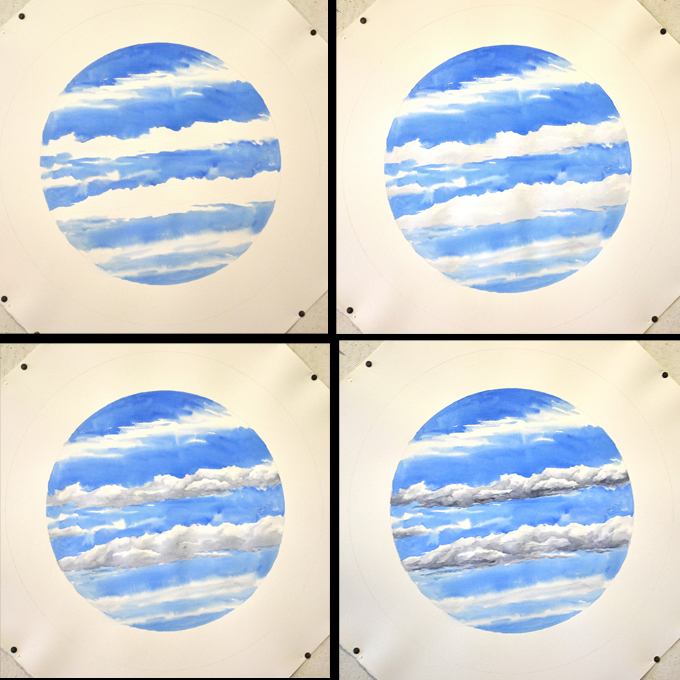
First, here’s the stages of Sky Aipen V’s sky.
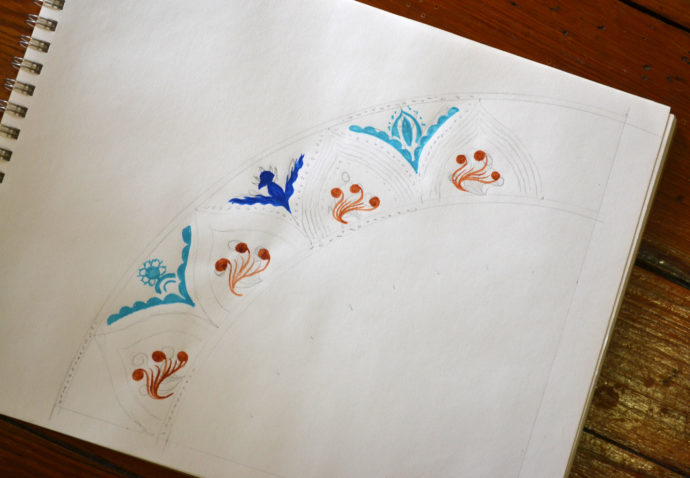
Sketch with three variations on how to fill the spaces between the arches, and practice painting the wavy, plant-like device under the arches.
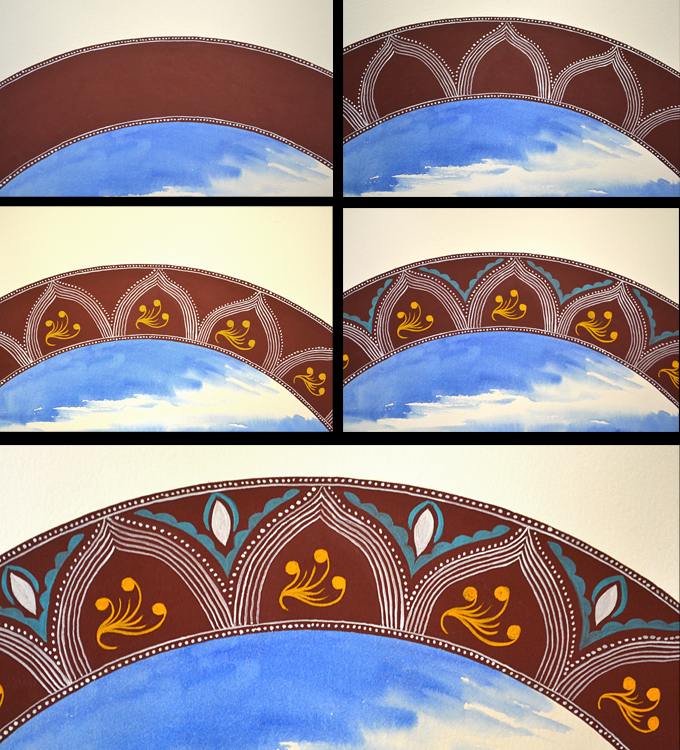
Details of the five steps of painting Sky Aipen V’s border.
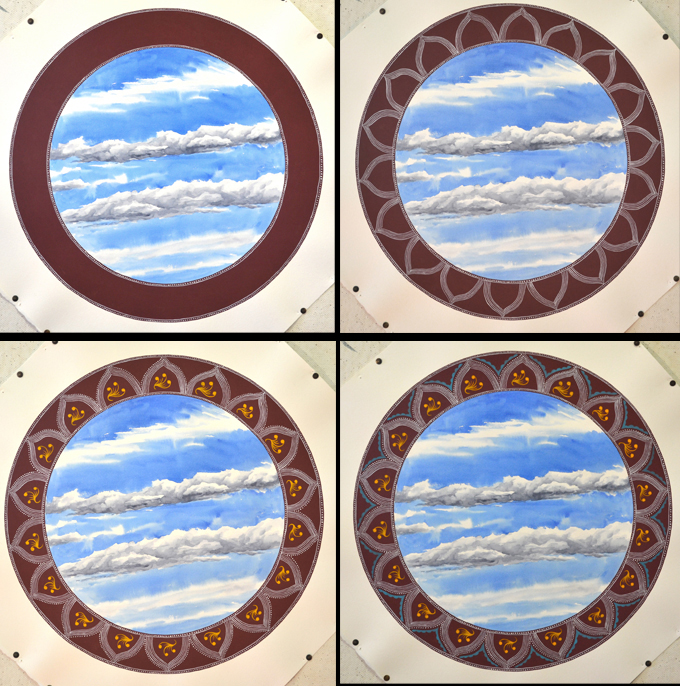
Four views of Sky Aipen V in production.
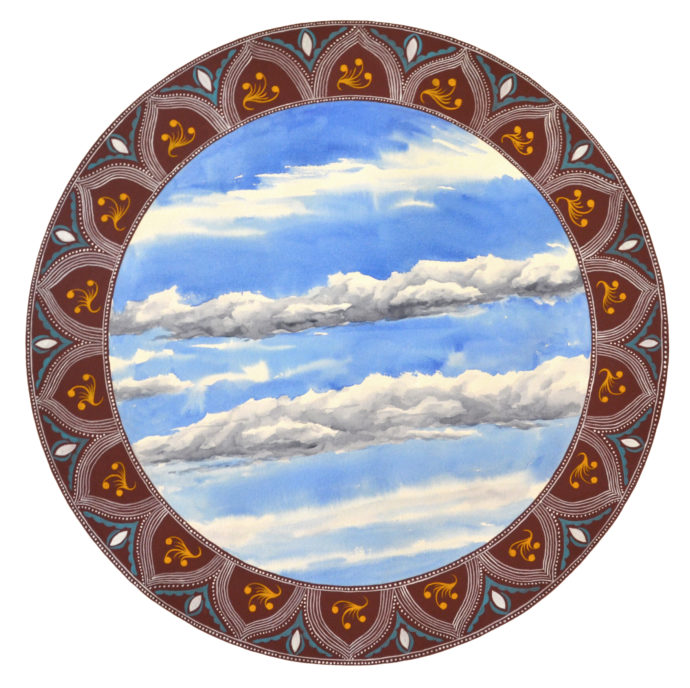
Scott Ponemone, Sky Aipen V, watercolor and gouache, 21 April 2016, 20″ diameter.
Sky Aipen VI
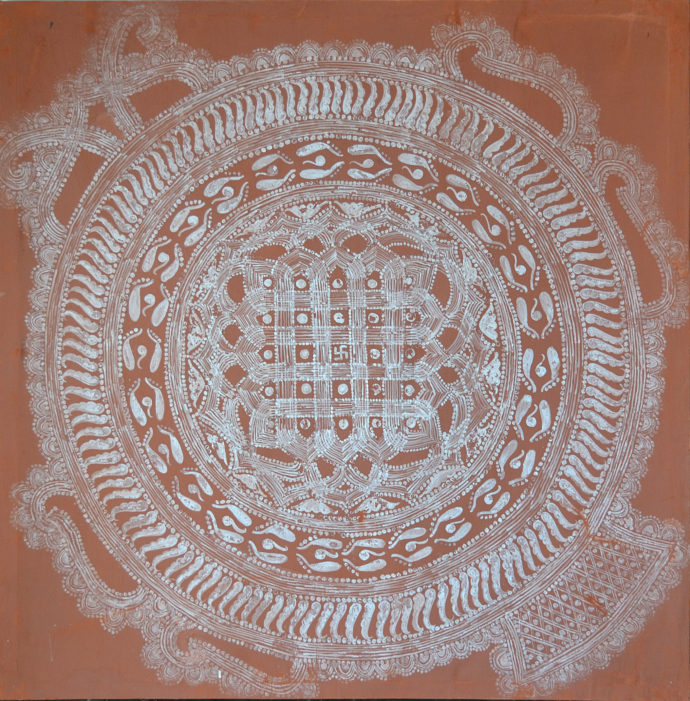
For Sky Aipen VI I broke away from the regular boarder shape by adding ears inspired by another aipen at Jugal Kishor Paithshali’s house.
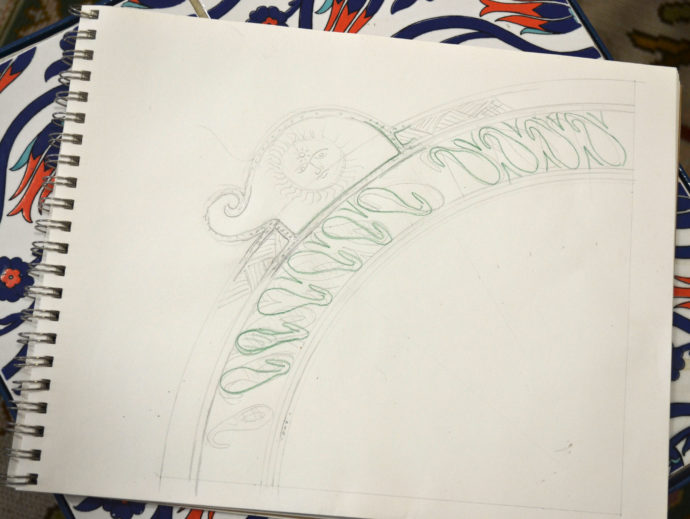
I modified the ears, as seen in this sketch, to resemble elephant profiles. I inadvertently first drew the teardrop shape (upper right) upside down. The other six have the correct orientation (the hook toward the center).
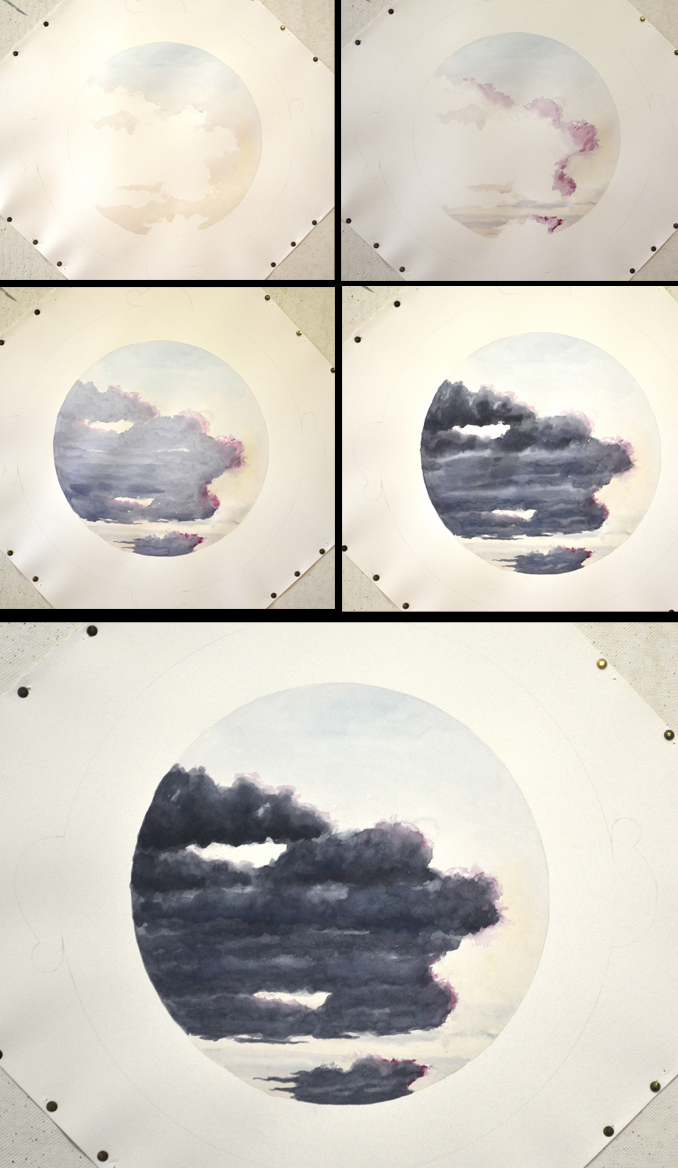
Sky Aipen VI’s sky, step by step.
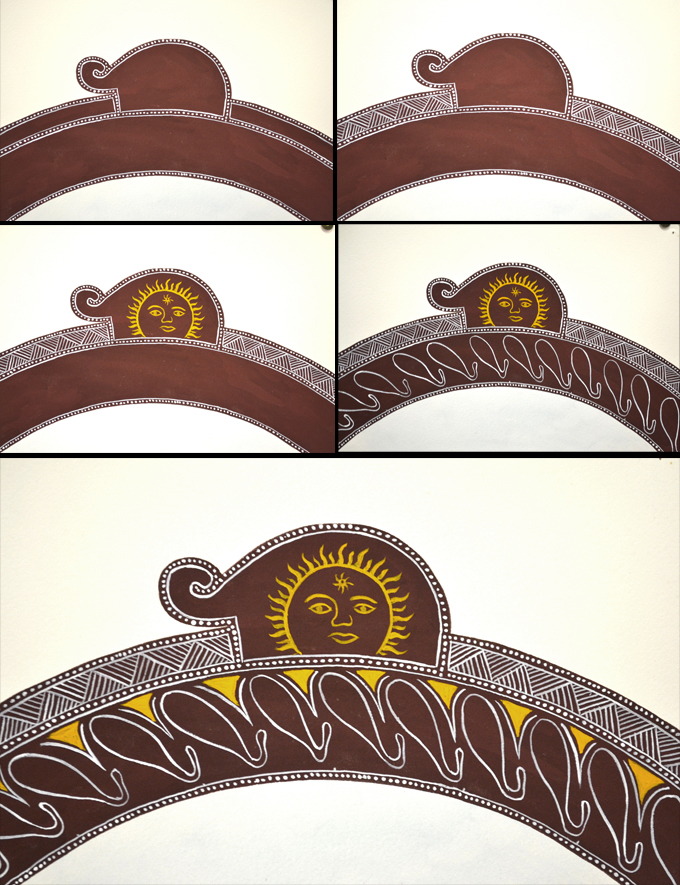
The border, step by step. Unlike the source material, I didn’t white-in the teardrops.
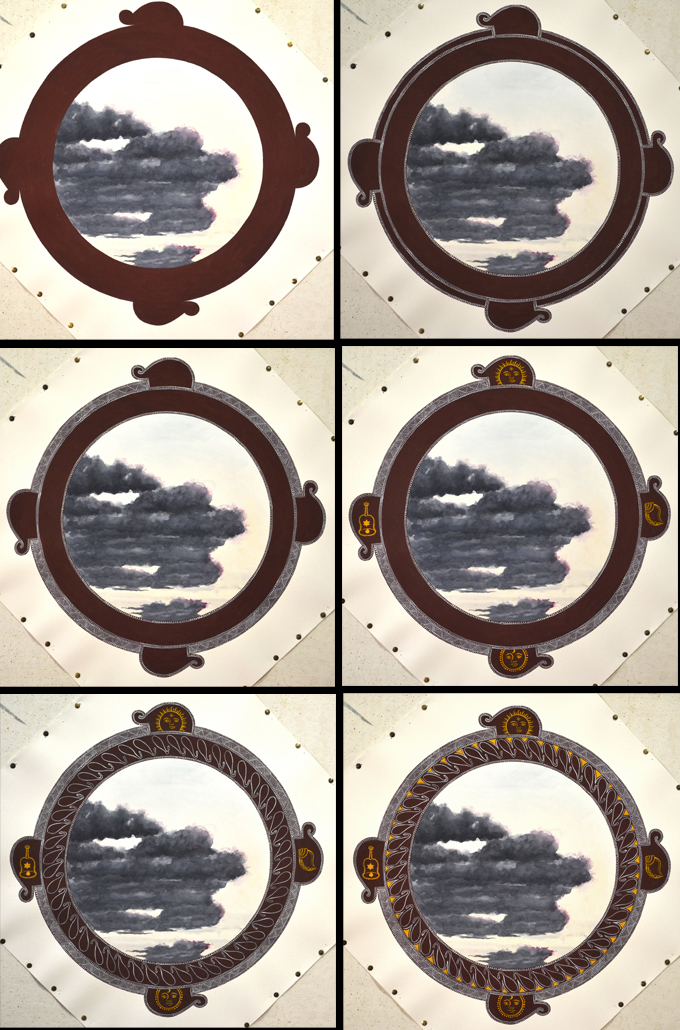
Six views of Sky Aipen VI’s production.
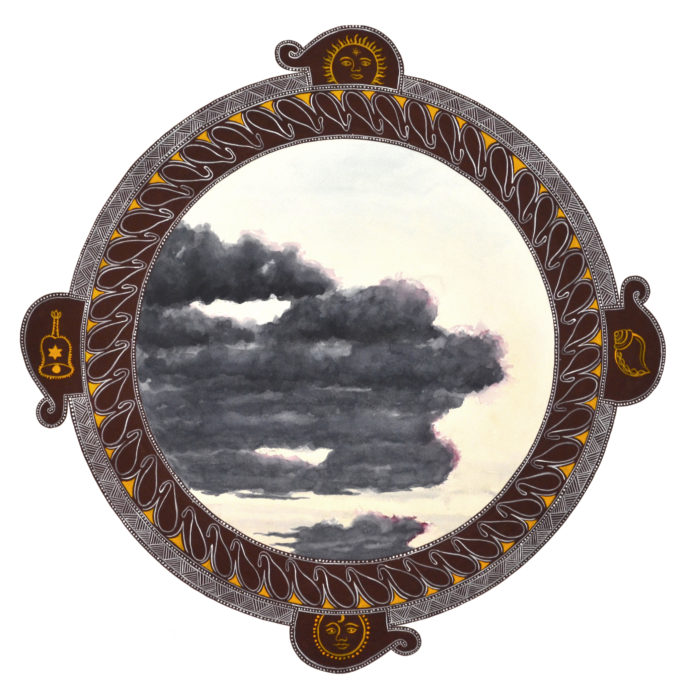
Scott Ponemone, Sky Aipen VI, watercolor and gouache, 11 May 2016, 22 7/8″ x 22 7/8″.
The sun (top), moon (below), bell and conch are auspicious Hindu symbols that are often used in Aipan.
Trackback URL: https://www.scottponemone.com/making-aipan-skies-go-big/trackback/











